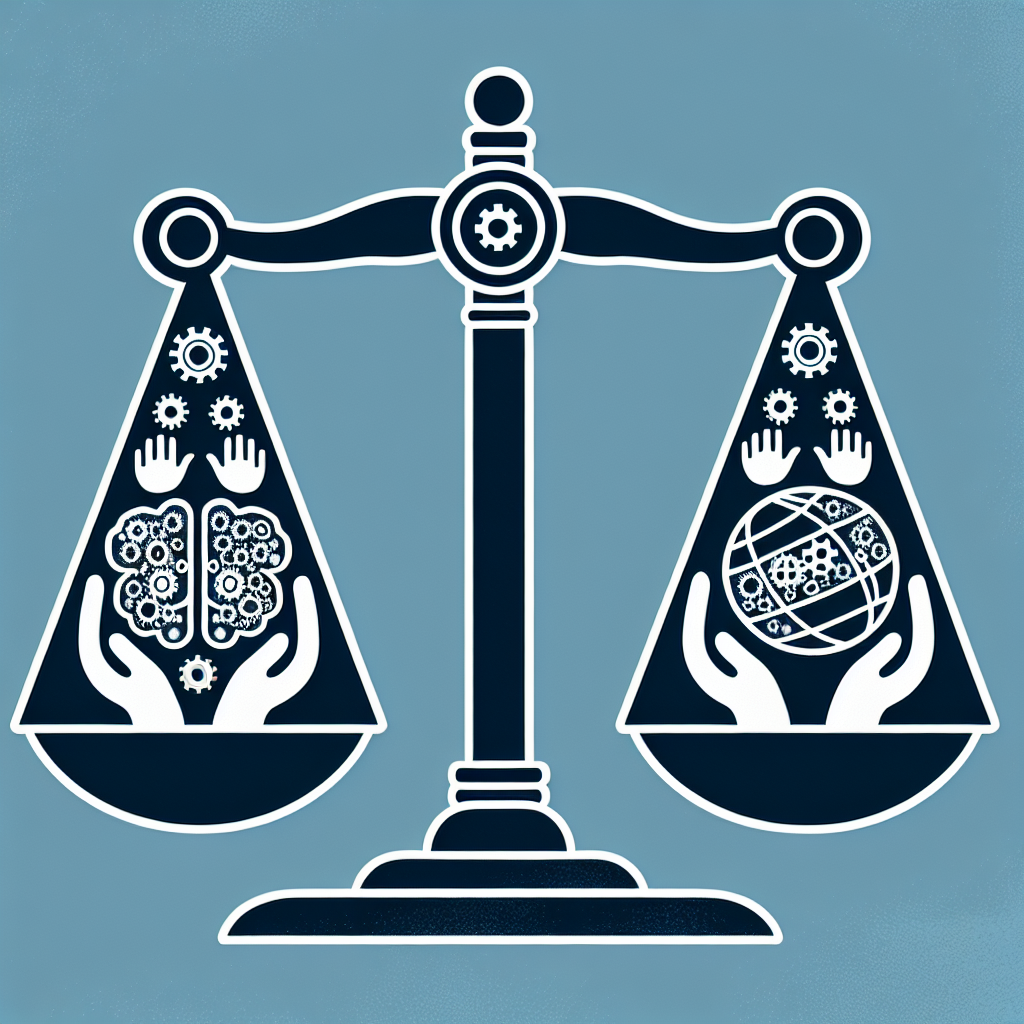Ethical AI in Humanitarian Aid: Ensuring Fairness and Equity
Introduction
Artificial Intelligence (AI) has the potential to revolutionize the way humanitarian aid is delivered. From predicting natural disasters to optimizing supply chains, AI has the power to make humanitarian efforts more efficient and effective. However, the use of AI in humanitarian aid also raises ethical concerns, particularly around fairness and equity. In this article, we will explore the importance of ethical AI in humanitarian aid, the challenges it presents, and how organizations can ensure fairness and equity in their AI systems.
The Importance of Ethical AI in Humanitarian Aid
Humanitarian aid organizations are tasked with helping the most vulnerable populations in times of crisis. These populations are often marginalized and face numerous challenges, from poverty to discrimination. In such contexts, the use of AI in humanitarian aid can be a powerful tool for improving outcomes and reaching more people in need. However, the use of AI also comes with risks, particularly around bias and discrimination.
AI systems are only as good as the data they are trained on. If the data used to train an AI system is biased or unrepresentative, the system itself will be biased. This can have serious consequences in the context of humanitarian aid, where decisions made by AI systems can have life-or-death implications. For example, if an AI system used to allocate resources in a refugee camp is biased against certain ethnic groups, those groups may receive less aid than they need, leading to further marginalization and suffering.
Ensuring Fairness and Equity in AI Systems
To ensure fairness and equity in AI systems used in humanitarian aid, organizations must take proactive steps to address bias and discrimination. This includes:
1. Diverse and Representative Data: One of the key ways to mitigate bias in AI systems is to ensure that the data used to train the system is diverse and representative of the populations it will be used to help. This means collecting data from a wide range of sources and ensuring that it includes input from marginalized communities.
2. Transparency and Accountability: Organizations using AI in humanitarian aid must be transparent about how their systems work and how decisions are made. This includes being open about the data used to train the system, the algorithms used, and the criteria used to make decisions. Organizations must also be accountable for the outcomes of their AI systems and be willing to address any biases that are identified.
3. Regular Monitoring and Evaluation: To ensure that AI systems are working as intended and not perpetuating bias, organizations must regularly monitor and evaluate their systems. This includes conducting audits to identify any biases or discriminatory outcomes and taking corrective action as needed.
4. Ethical Considerations: Organizations must consider the ethical implications of using AI in humanitarian aid and ensure that their systems are designed and deployed in ways that respect the rights and dignity of the people they are meant to help. This includes obtaining informed consent from individuals whose data is being used and ensuring that decisions made by AI systems are transparent and fair.
Frequently Asked Questions (FAQs)
Q: How can organizations ensure that AI systems used in humanitarian aid are fair and unbiased?
A: Organizations can ensure that AI systems are fair and unbiased by using diverse and representative data, being transparent about how their systems work, regularly monitoring and evaluating their systems, and considering the ethical implications of using AI in humanitarian aid.
Q: What are some examples of bias in AI systems used in humanitarian aid?
A: Examples of bias in AI systems used in humanitarian aid include algorithms that discriminate against certain ethnic groups in resource allocation, or systems that perpetuate gender stereotypes in decision-making.
Q: How can organizations ensure that marginalized communities are not further harmed by the use of AI in humanitarian aid?
A: Organizations can ensure that marginalized communities are not further harmed by the use of AI in humanitarian aid by actively involving these communities in the design and implementation of AI systems, and by regularly monitoring and evaluating their systems for bias and discrimination.
Q: What role can governments play in ensuring that AI systems used in humanitarian aid are fair and equitable?
A: Governments can play a key role in regulating the use of AI in humanitarian aid and ensuring that organizations adhere to ethical standards. This can include setting guidelines for the use of AI in humanitarian aid, conducting audits of AI systems, and holding organizations accountable for any biases or discrimination identified.
Conclusion
Ethical AI in humanitarian aid is essential for ensuring fairness and equity in the delivery of aid to marginalized populations. By taking proactive steps to address bias and discrimination, organizations can harness the power of AI to improve outcomes for those most in need. Through diverse and representative data, transparency, accountability, and ethical considerations, organizations can ensure that their AI systems are fair, unbiased, and respectful of the rights and dignity of the people they are meant to help. By prioritizing ethics in the development and deployment of AI systems, humanitarian aid organizations can truly make a positive impact on the lives of the most vulnerable populations.

